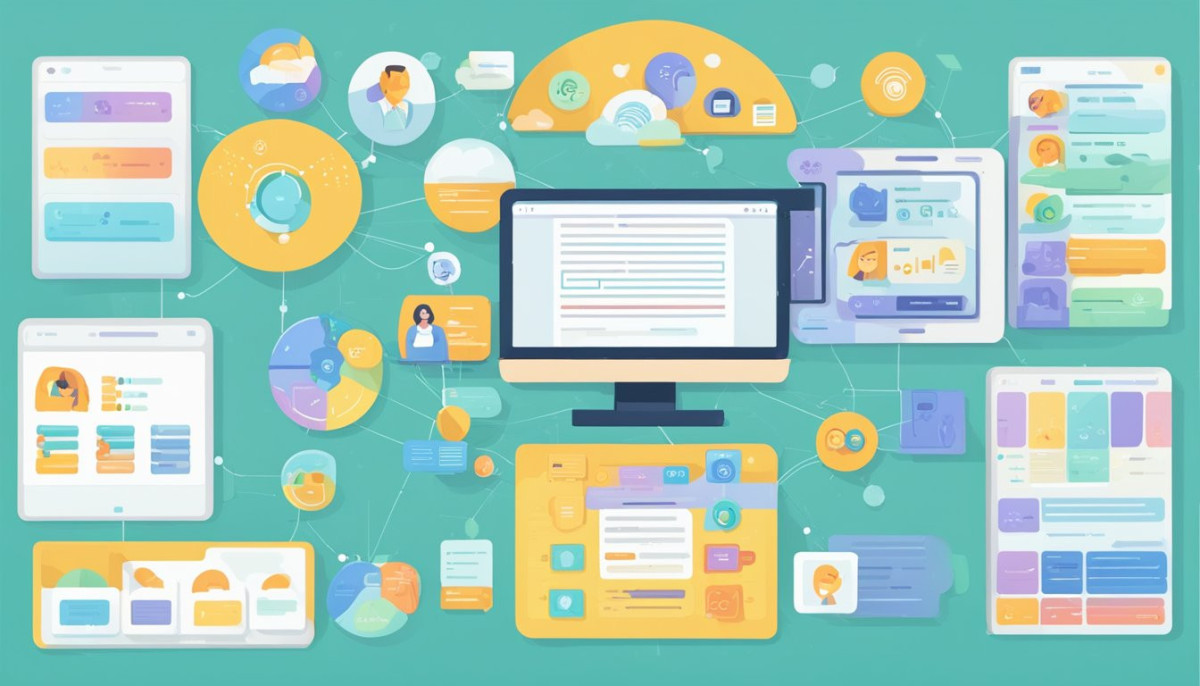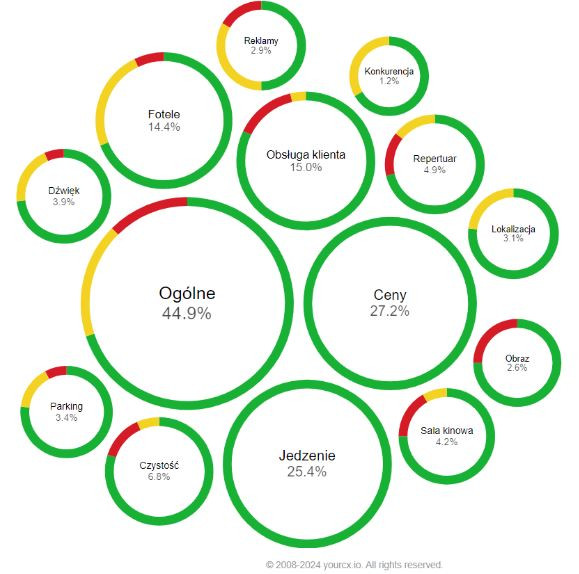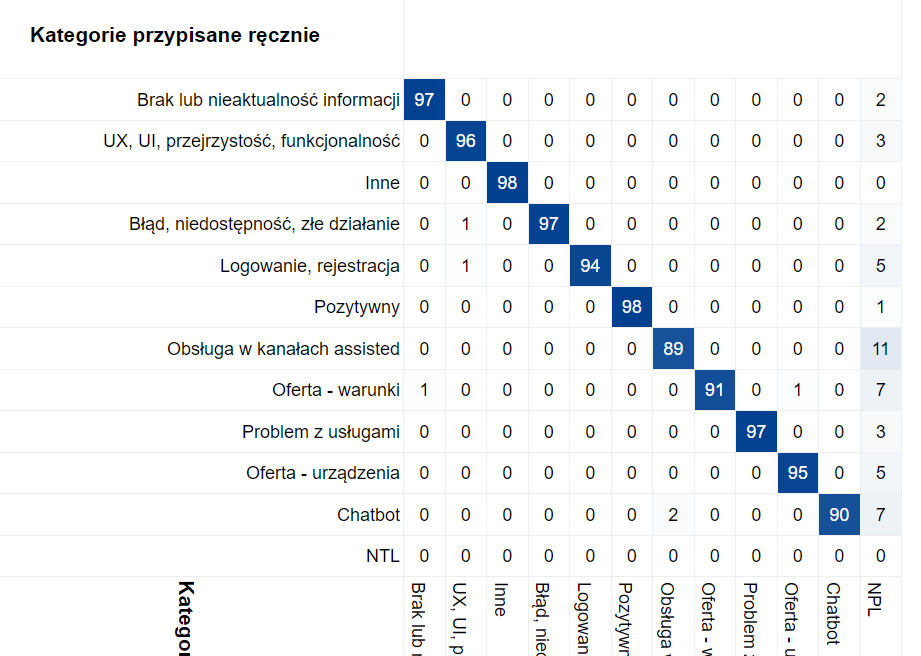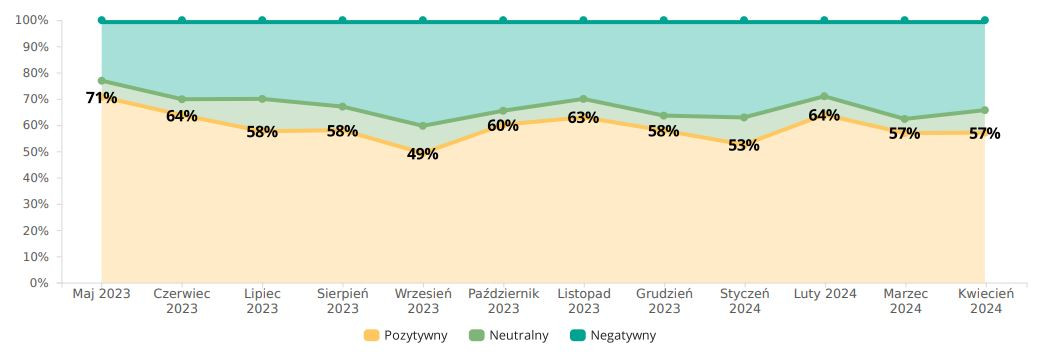- Research platform
Sources of information
Data analysis
Actions
- Solutions
For whom
Problems / Issues
- Materials
Materials
- About us
About us
Automatic text tagging and sentiment and emotion analysis are key components for understanding and interpreting text data. Platforms such as Yourcx.io use advanced natural language processing (NLP) and artificial intelligence (AI) technologies to analyze and classify the opinions and sentiments expressed by users in text.

Text data from open-ended questions in surveys or other types of feedback are difficult and time-consuming to analyze, so they are sometimes ignored. Open-ended responses are particularly important because they do not limit respondents to a predetermined set of answers. When data sets are large, manually coding all statements is tedious and very costly. In response to this challenge, we propose using advanced algorithms for automatic text classification, which has never been so efficient, accurate, and useful to use. And the time saved can be spent by researchers, if only for in-depth analysis and drawing conclusions.
Automatic categorization of open-ended statements is a process in which computer systems classify texts based on their content according to predetermined categories or discover categories on their own. Here are some key elements of the process:
Data preparation: The first step is to collect and prepare the text data that will be used to learn the model. Texts must be processed appropriately, which may include steps such as removing special characters, tokenization (dividing the text into smaller units, such as words), removing words with little informational value (known as stopwords) or stemming (reducing words to their basic form).
Feature selection: An important element is the selection of text features that will be used to train the model. Features can include various aspects of the text, such as the frequency of certain words, sentence length, grammatical structure, as well as advanced semantics-based methods such as word embeddings.
Modeling: A variety of machine learning models, both classical and deep learning-based, are used to categorize texts. Popular algorithms include, for example, naive Bayes classifier, support vector machines (SVMs), neural networks, or algorithms based on natural language processing (NLP) such as BERT (Bidirectional Encoder Representations from Transformers).
Model training and validation: The model is trained on data that has been appropriately labeled by category. Once trained, the model is tested to evaluate its effectiveness. Measures such as accuracy, precision, completeness and the F1 measure are often used to evaluate models.
Implementation and improvement: After training and validation, the model is ready for use in practical applications. However, be sure to continuously monitor the model's performance and adjust it, for example, by re-training with new data or adjusting features to improve its accuracy and efficiency.
In short, automatic speech categorization algorithms work on the principles ofNatural Language Processing(NLP) and machine learning. The system analyzes a given text for keywords, context and phrases using advanced language models to accurately categorize responses - both predefined and by creating relevant topics.
This process takes place automatically and in real time, for each language separately (the system has the ability to work in different languages). In addition, the YourCX platform performs text categorization using its own large language models without using external resources, which guarantees data security and protects against the possibility of sensitive information leaking to the network.
Automated categorization of open responses can bring many benefits to companies, both in terms of operational efficiency, better understanding of customers and optimization of business processes.

Increased efficiency: Automating the text classification process significantly speeds up the processing of large volumes of text data, eliminating the need for employees to manually review and classify content. This allows human resources to be better utilized for tasks that require specialized knowledge or creativity. Text categorization is possible literally within minutes of a given statement.
Improved customer service: Quick and precise categorization of customer responses allows for more efficient response to customer needs and inquiries. Systems can automatically forward requests to the appropriate departments or individuals, reducing response times and increasing customer satisfaction.
Better understanding of data: Text categorization enables deeper analysis of data collected from users, such as feedback, reviews, and survey responses. Companies can better understand their customers' preferences, expectations, and problems, which translates into the ability to adjust products, services, and marketing strategies.
Detecting trends and patterns: Automatic text classification makes it possible to quickly identify new market trends and patterns in customer behavior. This allows companies to react proactively to changing market conditions and optimize their strategies in a timely manner.
Cost reduction: Automating text categorization can significantly reduce costs associated with data management and customer service. Reducing the labor time required for manual data processing reduces operational costs.
Increased data accuracy: Categorization systems can provide greater consistency and precision in data classification, which is difficult to achieve in manual processes due to subjective interpretation of responses by different employees.
Enabling personalization: Understanding the categories and themes prevalent in customer responses enables the creation of more personalized experiences and offers that are better tailored to individual user needs and preferences.
Automated categorization of open-ended responses is a tool that enables companies to leverage the full potential of available text data, leading to a better understanding of the market and optimization of processes across different departments within the organization.
Automated detection of topic bundles is an important component, but it is equally important to understand customer sentiment toward those topics. YourCX's algorithms allow you to accurately analyze the tone and emotions contained in the statements, allowing you to quickly and accurately assess whether the feedback is positive, negative or neutral. With the ability to recognize 8 basic emotions, such as joy, anger or sadness, and their derivatives, we gain deeper insight into what customers really think and feel. This functionality allows us to better understand the unspoken needs or concerns of respondents.

Yourcx.io differentiates itself in the market with its advanced automated text analytics features, including speech categorization and sentiment and emotion analysis. The real game changer in customer feedback analysis is the simultaneous use of text categorization and sentiment assignment. The YourCX system, in this case, analyzing Google Maps feedback in addition to categorizing responses into specific predefined themes, detected consumer attitudes toward the categories.

The YourCX platform provides a number of mechanisms for classifying text, these include fully automatic mechanisms that independently discover relevant clusters of statements, as well as mechanisms with human assistance. It is possible to indicate relevant areas that the automations should find and match utterances to them, as long as it makes logical sense.
The platform also supports in every aspect of manual categorization. There are times when a company has been doing manual categorization of statements for years. The platform provides mechanisms for rapid manual categorization of utterances with the ability to assign multiple categories, as well as learning custom language models based on categorized utterances. Built-in mechanisms for analyzing the quality of categorization immediately indicate in which categories there are problems of overlap with other categories, which is important for the multi-categorization process of learning language models. Thanks to these mechanisms, it is possible to implement a tailored categorization model in a matter of hours.

Through a flexible API, YourCX enables integration with various data analytics systems, including CRM, databases or digital marketing tools, allowing fuller use of the collected information, which can be aggregated and analyzed in one place. The YourCX platform allows for full data exchange both ways - both importing any number of statements obtained in external surveys and exporting categories and sentiment. This provides a comprehensive view of customer experience and feedback activities. Such integration capabilities allow for more efficient data management and better coordination of marketing and service activities.
For example, wanting to stay up-to-date with sentiment analysis in specific categories, you can analyze each category by emotion. Below are consumer attitudes toward customer service over a period of months.

Having indicators from other surveys and the company's internal knowledge, one can analyze very precisely what influenced positive attitudes in May and what caused particularly negative emotions in September. By carefully analyzing the opinions expressed by customers, a company can effectively eliminate customer service behaviors that are detrimental according to consumers and reinforce those that are positively evaluated.
With automatic text categorization and sentiment and emotion analysis, a company can improve the operations of multiple departments:
Marketing and Sales: A better understanding of customers' emotions enables the creation of more engaging and effective marketing campaigns and the personalization of offers.
Product management: Feedback from customers is crucial for product development and improvement.
Customer Service: Using sentiment analysis allows faster identification of problematic topics and proactive resolution of customer issues.
Human Resource Management: Analysis of employee responses helps identify organizational problems and influences the development of company culture.
Finance: automated analysis of customer statements is much faster and, above all, cheaper than manual analysis by qualified researchers resulting in additional resources for the company (both time and financial).
Challenge: The bank sought to understand its customers' opinions and emotions about its online services, which were often discussed on social media and online forums. Analyzing this data was crucial to identifying user issues, but the volume was too large to process manually.
Solution: the bank implemented automatic categorization and sentiment analysis systems that allowed segregation of statements about specific services (e.g., online banking, loans, customer service). The system analyzed how emotions affect ratings, which allowed it to catch categories where fear, sadness or disgust were most frequently detected.
Results: Thanks to automated analysis, the bank quickly identified and responded to negative comments, improving its online services and increasing overall customer satisfaction. In addition, the emotion analysis helped fine-tune marketing communications to customers' moods, increasing customer engagement and loyalty.
Challenge: Every day, the store received hundreds of customer reviews coming in through various channels: website, social media and review platforms. The company struggled to process and analyze this information quickly, leading to delays in responding to customers and making it difficult to detect areas for improvement.
SOLUTION: The implementation of automatic text categorization enabled the company to quickly and accurately analyze the collected reviews and respond to them more dynamically. This solution allowed the company to easily identify the most common themes and issues, as well as to understand customer sentiment toward particular products, which enabled the company to expand its offerings to include brands with particular appeal.
Results: Thanks to the changes made, the store has benefited from the quality of customer service, responding promptly to negative comments and using the information gathered to improve its assortment and marketing strategies.
Challenge: The hotel chain needed to monitor and analyze guest reviews posted on various booking and travel portals to understand customer expectations and identify areas for improvement in its offerings.
Solution: Automated text classification and emotion research provided an effective and fast analysis of reviews and opinions left by customers on various platforms (on the website, on travel portals, on social media and various forums). The tool classified reviews according to topics such as cleanliness, customer service, location and amenities.
Results: The hotel chain improved the quality of its services in response to issues reported by guests, which in turn led to an increase in positive reviews and better visibility on travel sites. Emotion analysis also allowed for a more personalized approach to guests, increasing their satisfaction and loyalty.
Challenge: The energy company was encountering difficulties in identifying and responding to customer worries about power outages, which were often discussed in phone calls and emails.
Solution: The implementation of automatic categorization allowed the company to segment customer messages by topics such as power outages, customer service and billing. A sentiment and emotion analysis system further assessed the level of dissatisfaction or stress in communications, enabling the company to prioritize the most urgent cases.
Results: The company was able to respond more quickly to outages and other problems, significantly improving customer satisfaction. Emotion analysis also helped optimize messages sent to customers, making them more empathetic and better received in crisis situations.
Automated categorization of statements and sentiment and emotion analysis requires special attention to regulation. Ensuring privacy and aligning algorithms with current ethical standards are key to the legality and social acceptability of such technologies.
At YourCX, data security and confidentiality are very important aspects at every stage of data processing, so all survey statements are analyzed through proprietary statement processing and text mining mechanisms. Only this approach, which does not allow data to be shared externally, makes the data safe.
Automated analysis of open-ended responses is not only the technology of tomorrow - it is already revolutionizing the way companies collect and analyze unstructured data. It enables them to analyze large volumes of information quickly, efficiently and scalably, providing key insights that can be used at multiple levels of management.
Copyright © 2023. YourCX. All rights reserved — Design by Proformat